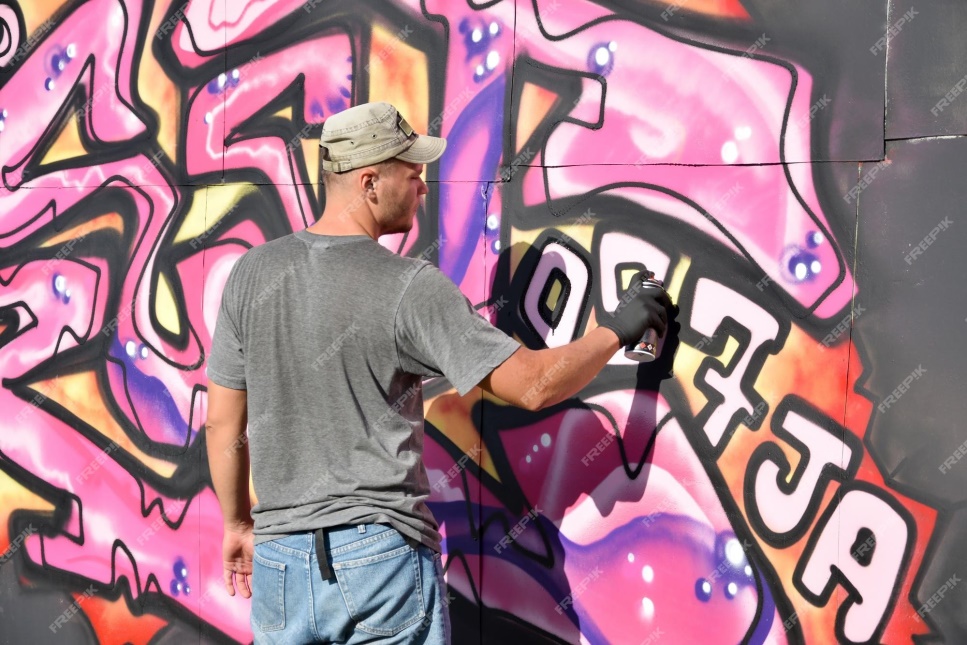Graffiti, once considered an act of rebellion, has evolved into a globally recognized art form. Its vibrant colors, dynamic shapes, and expressive messages have made it a popular medium for artists seeking to leave their mark on the urban landscape. In this article, we delve deep into the world of graffiti, exploring its history, techniques, and styles, as well as offering practical tips for aspiring Drawing:s7tzk_sdw-0= Graffiti artists. Whether you are a beginner or an experienced artist, this comprehensive guide will equip you with the knowledge and inspiration needed to elevate your graffiti art to the next level.
Understanding the History of Graffiti
Graffiti has a rich and complex history that dates back to ancient civilizations. The earliest forms of graffiti can be traced to the walls of caves and ancient buildings where people inscribed images and symbols. However, the modern graffiti movement as we know it began in the 1960s in New York City. During this time, graffiti became a form of expression for marginalized communities, often used to convey political messages and social commentary.
As graffiti gained popularity, it also faced significant backlash from authorities who viewed it as vandalism. Despite this, graffiti continued to thrive, evolving into a legitimate art form. Today, graffiti is recognized for its artistic value and is featured in galleries and museums around the world.
Essential Graffiti Techniques
To create captivating graffiti, it is crucial to master the fundamental techniques that define this art form. Below are some of the most important techniques that every graffiti artist should know:
1. Tagging
Tagging is the most basic form of graffiti and typically involves writing a name or alias in a stylized manner. Tags are often the starting point for many graffiti artists as they help develop a unique artistic identity. When creating a tag, it is important to focus on the flow and consistency of the letters, as well as the overall aesthetic of the design.
2. Throw-Ups
Throw-ups, also known as “bombs,” are a step up from tagging and involve filling in letters with one or two colors. Throw-ups are usually quick to execute and are often used in areas where time is limited. The key to a successful throw-up is simplicity and efficiency, with bold outlines and minimal details.
3. Wildstyle
Wildstyle is one of the most complex forms of graffiti and requires a high level of skill and experience. This technique involves interlocking letters, intricate designs, and often incorporates arrows, spikes, and other decorative elements. Wildstyle pieces are known for their chaotic appearance, but they are meticulously planned and executed. Mastering Wildstyle takes time and practice, but it is a hallmark of advanced graffiti artistry.
4. Stencils
Stencils are a popular technique for creating detailed and repeatable designs. Artists cut out shapes or images on a piece of cardboard or plastic, then spray paint over the stencil to create a clean and precise image on the surface. Stenciling allows for more intricate designs and is often used for political or social commentary.
5. Piece
A “piece” (short for “masterpiece”) is a large and elaborate graffiti work that typically covers a significant portion of a wall or surface. Pieces are highly detailed and often involve multiple colors and complex designs. Creating a piece requires a thorough understanding of color theory, composition, and technical skill.
Exploring Graffiti Styles
Graffiti is a diverse art form with a wide range of styles that reflect the individuality and creativity of the artist. Here are some of the most popular graffiti styles:
1. Bubble Letters
Bubble letters are characterized by their rounded and inflated appearance, making them one of the most recognizable graffiti styles. This style is often used for tags and throw-ups due to its bold and playful look. Bubble letters are easy to read and can be filled with bright colors to make them stand out.
2. Blockbuster
Blockbuster style is known for its large, blocky letters that are designed to cover a large area quickly. This style is often used in high-visibility locations and is characterized by its straightforward, no-nonsense approach. Blockbuster pieces are usually done in monochromatic colors, making them easy to spot from a distance.
3. Abstract
Abstract graffiti is less about letters and more about shapes, colors, and forms. This style allows artists to experiment with different visual elements, creating pieces that are more about expression than readability. Abstract graffiti often incorporates surreal or futuristic elements, making it a unique and eye-catching style.
4. 3D Graffiti
3D graffiti adds depth and dimension to the artwork, making it appear as though the letters or images are popping off the wall. This style requires a strong understanding of perspective and shading to create the illusion of three-dimensionality. 3D graffiti is highly impressive and can transform a flat surface into a dynamic work of art.
5. Character Graffiti
Character graffiti involves the depiction of cartoon-like characters or figures within the graffiti piece. These characters can range from simple and humorous to highly detailed and realistic. Character graffiti adds a narrative element to the artwork, allowing the artist to tell a story or convey a message through their characters.
Tips for Aspiring Graffiti Artists
If you are new to graffiti or looking to improve your skills, here are some tips to help you on your journey:
1. Start with Sketching
Before you start painting on walls, it is essential to practice your designs on paper. Sketching allows you to refine your ideas and develop your style without the pressure of working on a large scale. Keep a sketchbook to document your progress and experiment with different techniques and styles.
2. Understand the Legalities
Graffiti is often associated with vandalism, so it is important to understand the legal implications of your work. Many cities have designated areas where graffiti is allowed, known as “legal walls.” Always seek permission before painting on private property, and be aware of the laws in your area to avoid legal trouble.
3. Invest in Quality Materials
The quality of your materials can greatly impact the outcome of your graffiti. Invest in high-quality spray paint, markers, and other tools to ensure your work looks professional. Different brands offer a variety of colors, nozzles, and finishes, so experiment with different options to find what works best for you.
4. Learn from Other Artists
The graffiti community is full of talented artists who are often willing to share their knowledge and experience. Attend graffiti events, workshops, and exhibitions to connect with other artists and learn from their techniques. Online platforms like Instagram and YouTube are also great resources for finding inspiration and tutorials.
5. Keep Practicing
Like any art form, graffiti requires constant practice and dedication. The more you paint, the more you will develop your skills and style. Don’t be afraid to make mistakes, as they are an essential part of the learning process. Keep pushing your boundaries and experimenting with new ideas to continue growing as an artist.
Conclusion
Graffiti is a powerful and dynamic art form that allows artists to express themselves in unique and impactful ways. By understanding the history, mastering essential techniques, and exploring different styles, you can elevate your graffiti to new heights. Whether you are creating a simple tag or a complex piece, the key to success in graffiti is passion, creativity, and perseverance.

